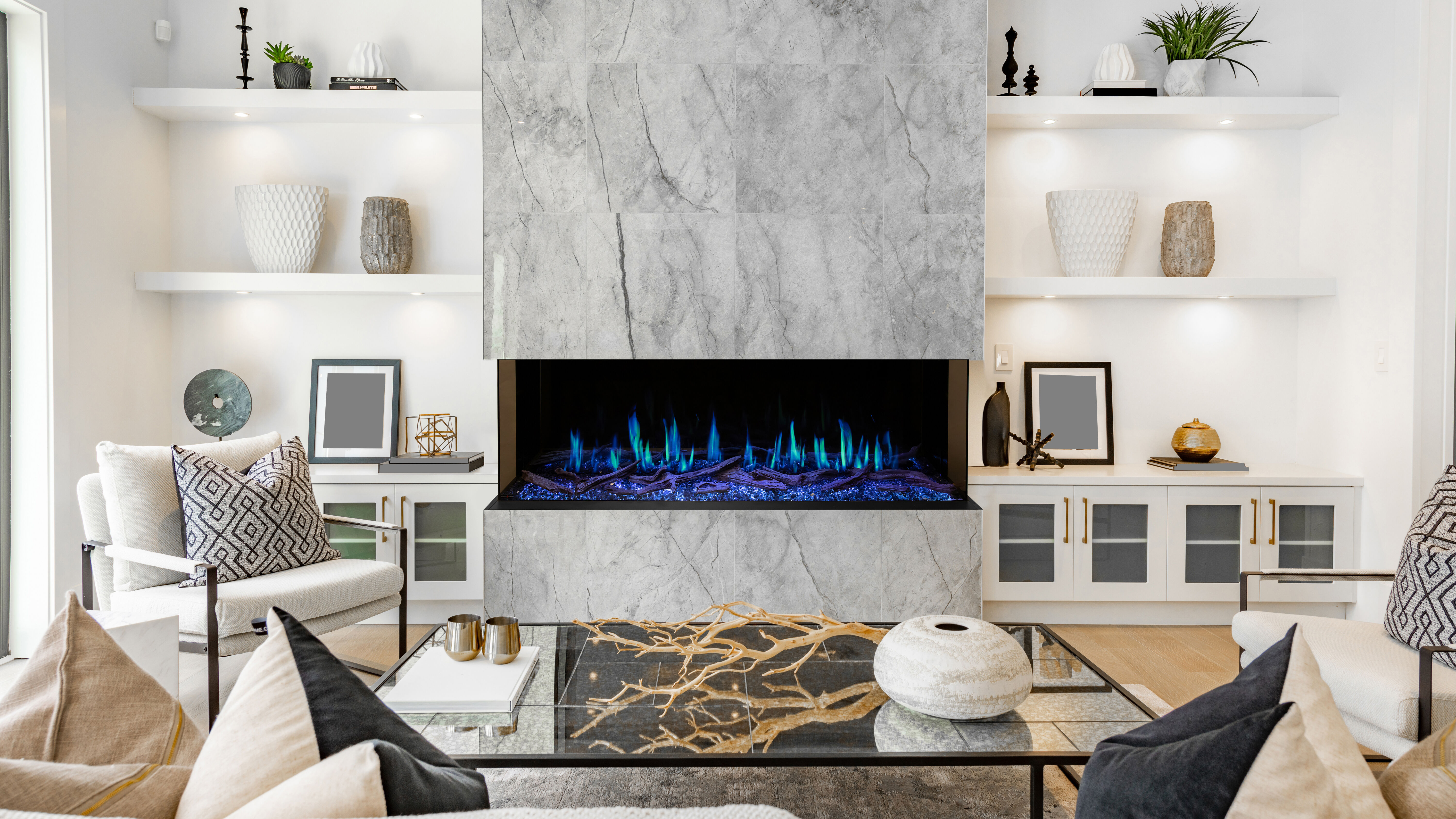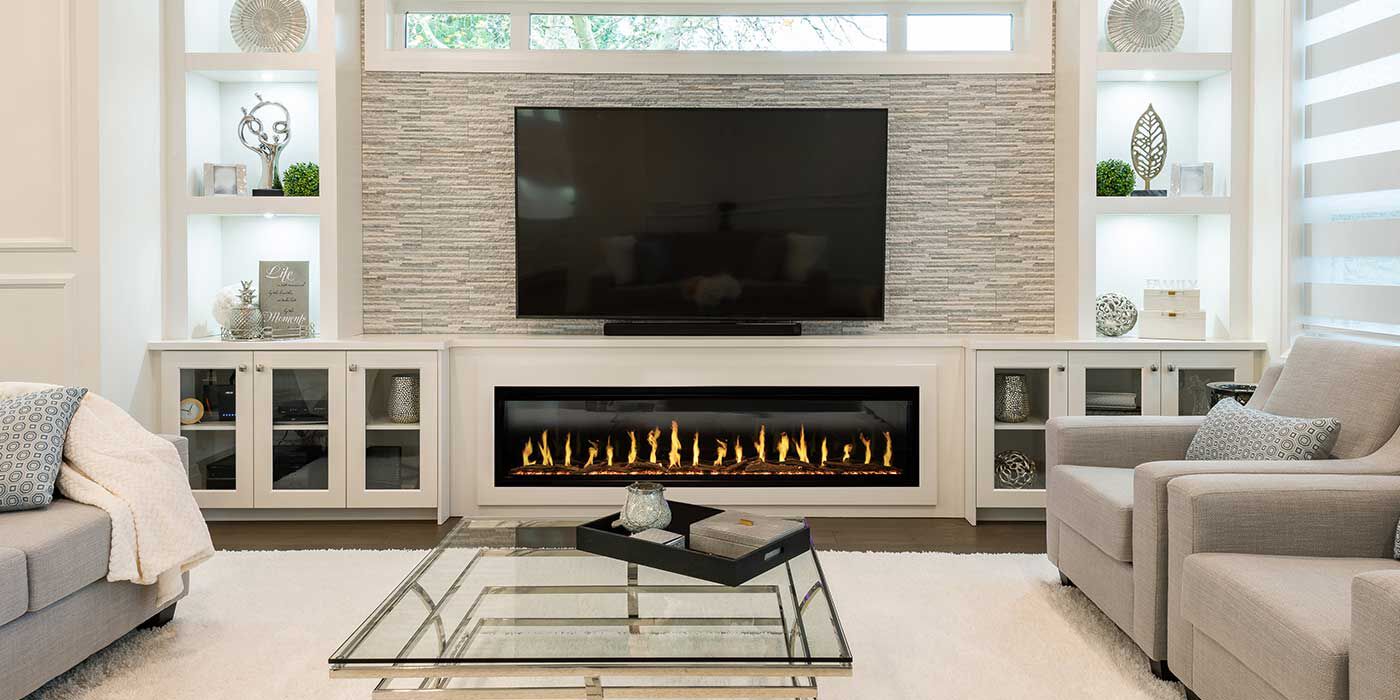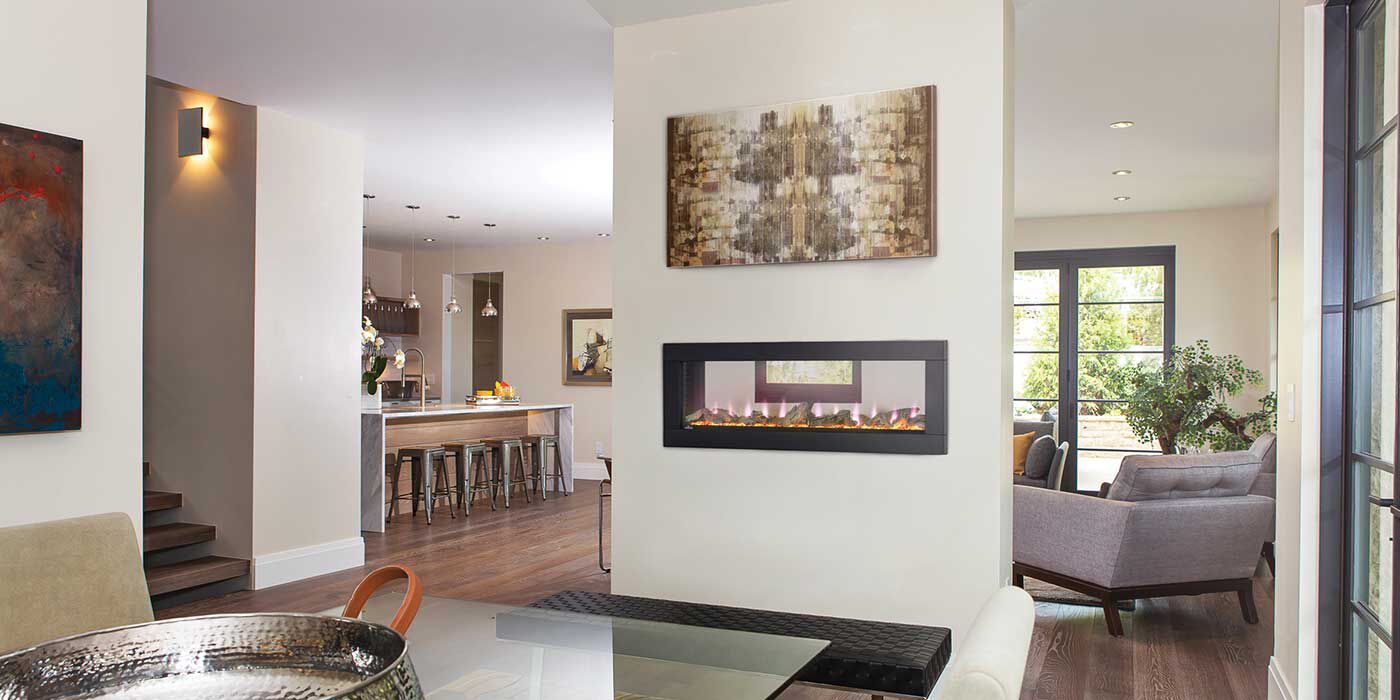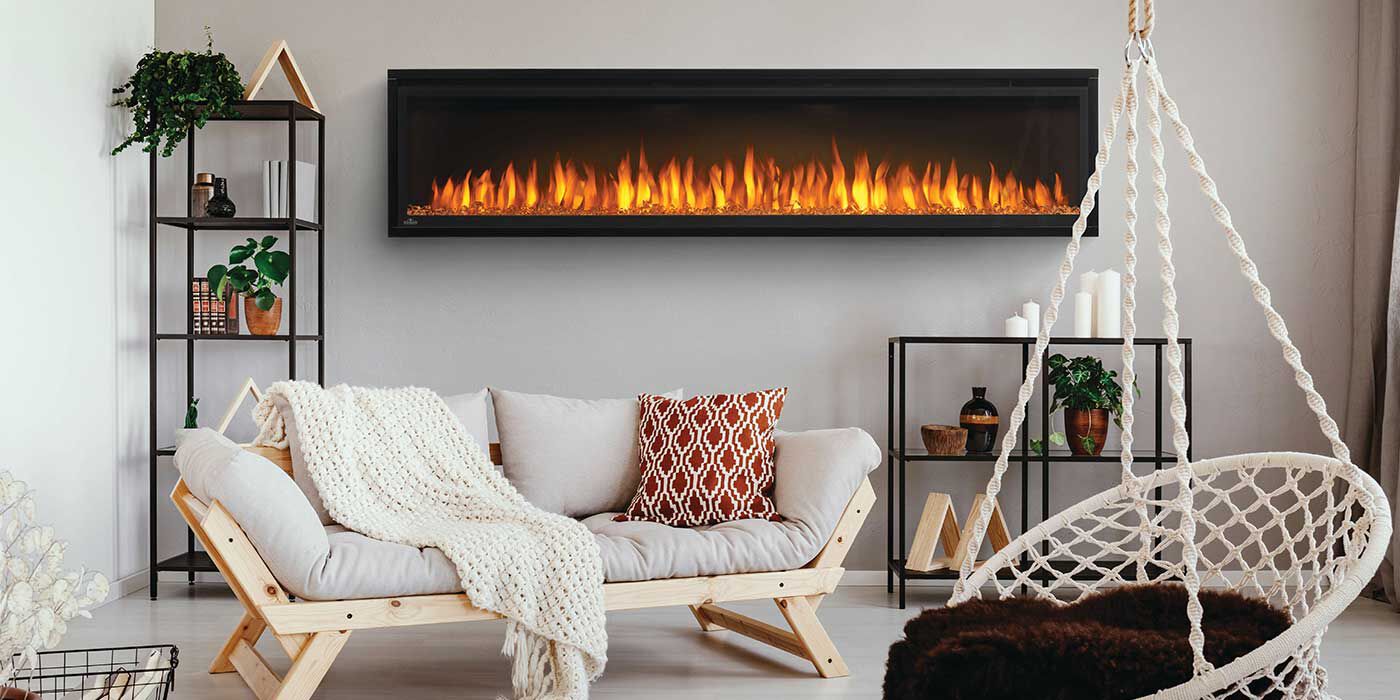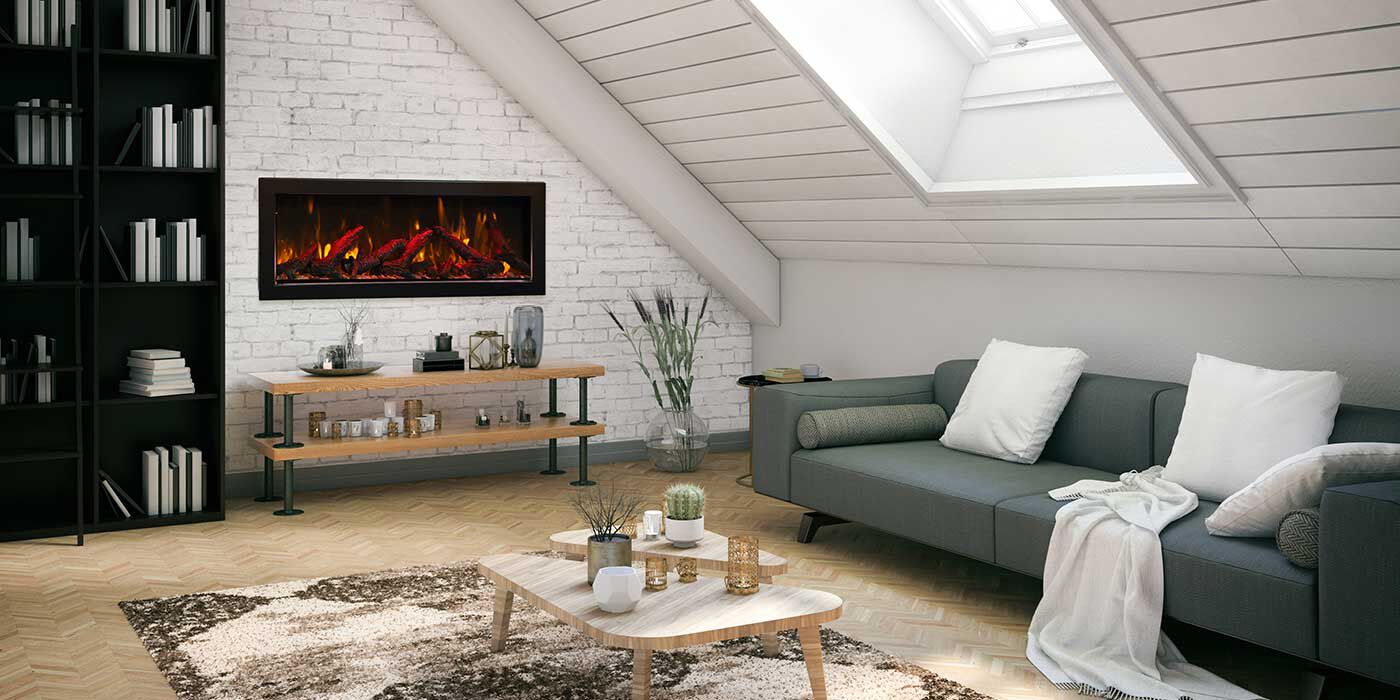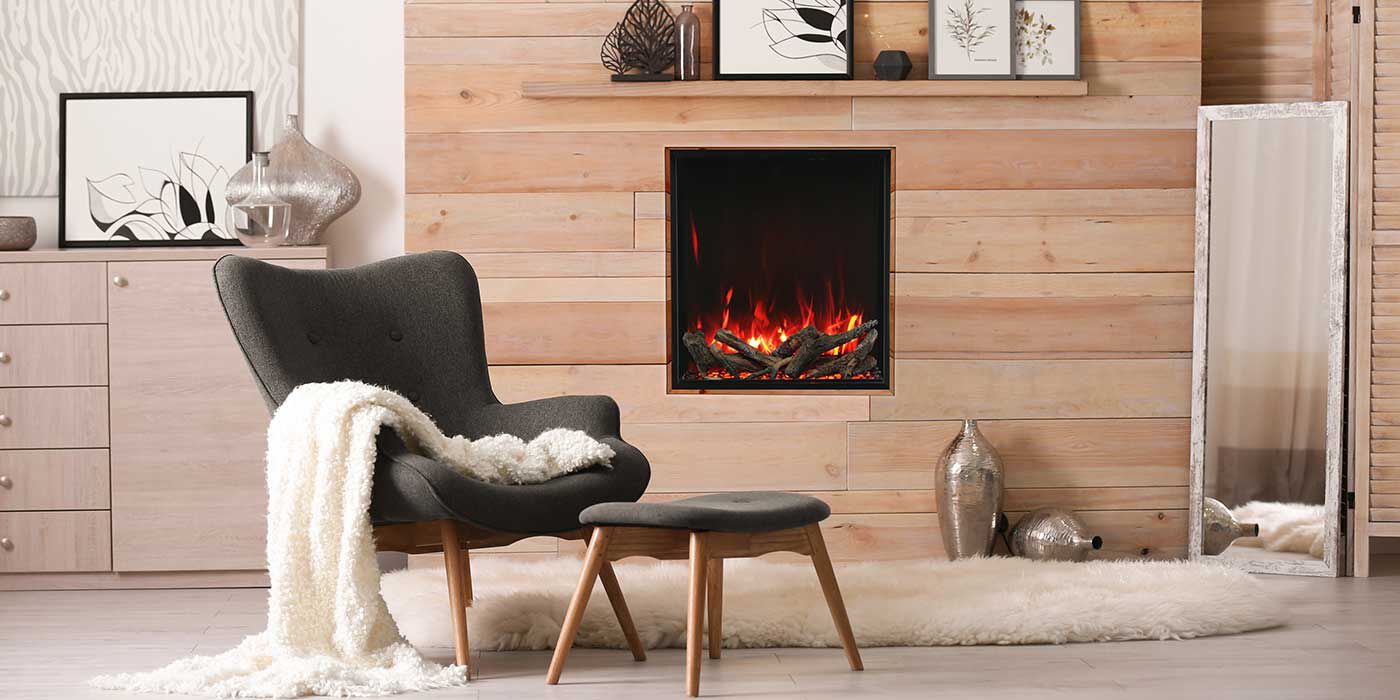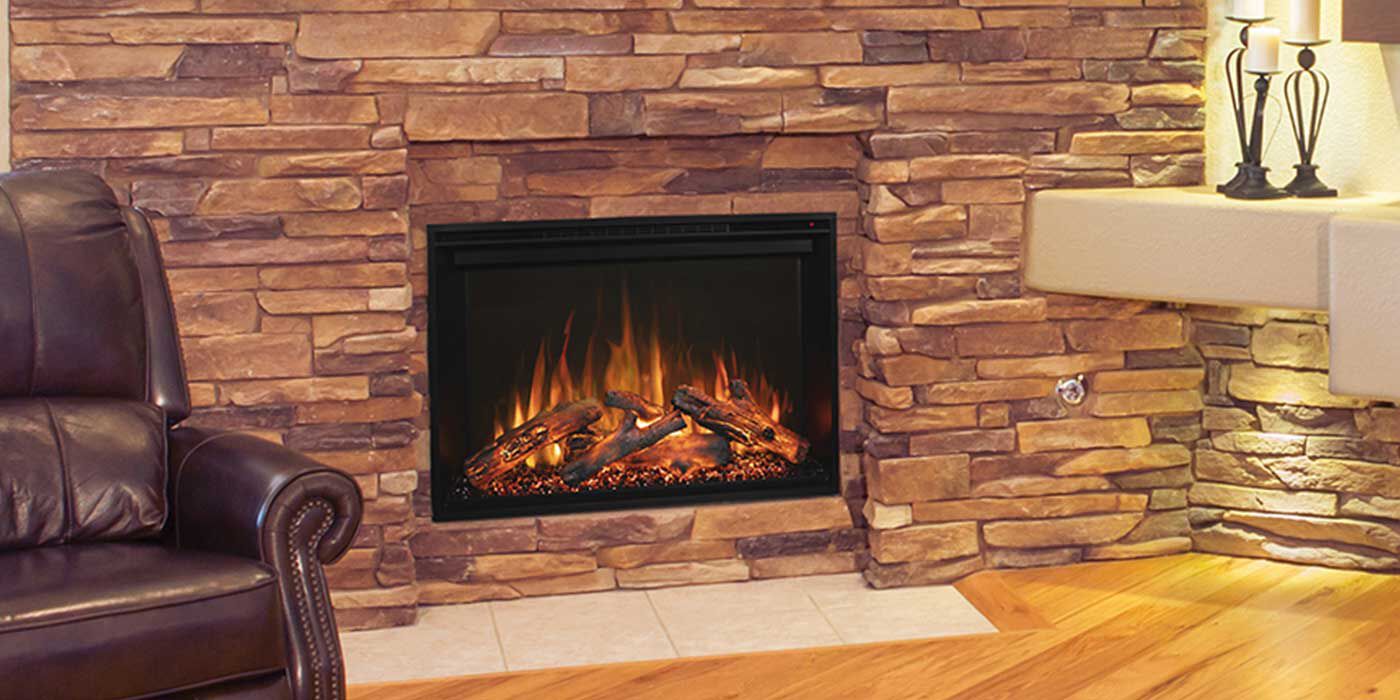By: Tiffany Kurilla, NFI Certified Master Hearth Professional
Last Updated: June 12, 2025
Electric fireplaces are efficient, cost-effective alternatives to traditional wood and gas fireplaces. They don’t produce real fire, smoke, harmful byproducts, or emissions, and are incredibly easy to install and operate.
Follow this simple guide to find out how electric fireplaces work and the benefits they offer. We'll also list our best-selling models to help you find some inspiration for your home!
The Benefits of Buying an Electric Fireplace
- Energy-efficient
- Cost-effective
- Low maintenance
- Little-to-no clearance requirements
- No installation restrictions
- No smoke, harmful byproducts, or emissions
- Long-lasting - won’t corrode from high-heat exposure like gas or wood fireplaces
- Hassle-free installation - Simply plug it in
- A variety of styles to choose from (traditional, linear, built-in, free-standing, etc.)
- Completely safe - no fire, stays cool to the touch
- Various lifelike flame effects
- Flames can operate separately from heat - great focal point for all seasons and climates
How Does an Electric Fireplace Work?
Electric fireplaces use electricity and LED technology to create heat and artificial flames, without needing solid or gaseous fuels. You can plug them into a wall socket and operate them with a hand-held remote control.
Electric fireplaces vary in operation based on the brand and model, but they all replace cool air with warm air. The fireplace pulls in cool air, warms it with a heating coil, and pushes the warm air out into the room with a built-in fan.
Electric fireplaces use infrared heat to warm people and objects, rather than heating the surrounding air. This means all the heat produced stays in the room.
Most models use a motorized mechanism to create artificial flames. This mechanism reflects light off mirrors or metal strips, giving the appearance of a dancing and flickering fire.
Some models, like the Opti-Myst by Dimplex, use specialized technology to create hyper-realistic flames from water vapor. Others feature a video and audio loop of a real wood burning fire to create an immersive, lifelike experience.
Typically, electric fireplaces use LED lightbulbs, which contribute to the overall efficiency, lifespan, and environmental impact. High-quality LED lightbulbs can last up to 50,000 hours (about 5 and a half years), produce 90% less heat, and use less energy than incandescent and CFL bulbs. They also don't contain mercury and won't damage the environment when thrown away.
Some electric fireplaces have adjustable flame colors and LED accent lighting. You can use these modern features to set a specific mood, match the season, or complement your home decor. Most models also allow you to operate the flames and heat separately, so you can still enjoy a "fire" in the hot summer months.
How Much Heat Will You Get?
Electric fireplaces typically heat between 400-1,000 square feet effectively. However, each manufacturer will specify a different square footage. Check the owner's manual or product page to confirm the wattage and BTU requirements of your electric fireplace.
What Kind of Electrical Connection Do You Need?
Most electric fireplaces mount to the wall and plug into a standard wall socket. You can also find a model that hardwires into your home's electrical system for a more permanent installation.
To prevent a fuse from blowing, make sure your electrical system can handle another appliance. For electric fireplaces that require higher voltage, you’ll need to hire a licensed electrician to wire the socket. Purchase a surge protector or fire-safe socket to ensure your fireplace and wall outlet won't overheat.
Where Can You Install an Electric Fireplace?
The biggest benefit of wall-mounted electric fireplaces is the installation flexibility. Most units are zero clearance and won't pose a risk when placed next to flammable objects, like furniture. You can safely install a wall-mounted electric fireplace anywhere, even areas outside your main living room. Electric units make excellent centerpieces for bedrooms, bathrooms, offices, and entryways.
Built-in electric fireplaces are slightly different. They have some clearance requirements and installation restrictions to ensure heat doesn't build up in your walls. You'll need to install your built-in electric fireplace with proper ventilation. Clearances and restrictions are brand-specific, so make sure you check the owner's manual prior to installation.
Are There Any Safety Considerations?
Electric fireplaces are the safest option, especially if you have small children and pets in the home. They only use electricity to work and don't create real flames, smoke, or emissions. They're an excellent alternative if you live in a location that doesn't allow gas or wood burning features.
How Much Does Installation Cost?
Electric fireplaces are extremely affordable. They don't require custom framing, a chimney, fuel, or yearly service, saving you a lot of money upfront and in the long run. Your initial installation costs may include hiring a licensed electrician, depending on the electric fireplace you purchase. You may also need to hire a contractor to install a built-in unit.
How to Calculate Cost Per Hour
If you’d like to know what the cost to operate an electric fireplace will be, here’s how to figure it out:
(Watts / 1,000) x kw/hr = total cost per hour
- Look-up the maximum amount of watts your electric fireplace consumes. You can find this information on the fireplace itself, in the owner's manual, or on the product page listing.
- Look-up the local rate for a kilowatt-hour (kw/hr) on your monthly utility statement.
- Take the total watts and divide by 1,000 to convert watts into kilowatts.
- Multiply the kilowatts by the kw/hr rate from your utility statement. This equals your total cost per hour.
For example, say you have an electric fireplace that consumes 5,000 watts and your kw/hr rate is 15 cents. Your total cost would be 75 cents per hour to operate the fireplace:
(5,000 watts / 1,000) x .15 = .75, or 75 cents per hour
To get the total daily cost, multiply the total cents per hour by the number of hours you use the fireplace each day.
What Fireplace Styles are Available?
Electric fireplaces come in an array of styles, so it's easy to find a look that ties into your home design. These styles include:
- Linear
- Built-in
- Wall-mounted
- Inserts
- Freestanding with a mantel or entertainment center
- See-through
- Log sets
Our Most Popular Electric Fireplaces
What Control & Media Options are Available?
Much like TVs, electric fireplaces are operated by hand-held remotes or by control buttons on the unit.
Most of the time, you can customize the media bed in your electric fireplace. Media is brand-specific and generally includes log sets, crystal gems, crushed fire glass, and coal embers.
We're Here to Help
Need some help choosing the best fireplace for your home? Call our NFI certified experts at 800.919.1904 today!
More Resources
Want to enjoy a fireplace on the patio? Explore these outdoor-rated electric models.
Find a product that perfectly matches your space with our Fire Feature Style Guide.
Follow this guide to find the right professional for any fire project.
 |
Tiffany Kurilla, Technical Sales Representative, has five years of experience at Woodland Direct. As an NFI-Certified Master Hearth Professional, she’s recognized for her deep knowledge of fireplace products and safety standards. Tiffany’s dedication and mastery earned her the title of Woodland’s top sales representative in 2021 and 2022. Outside of work, Tiffany is an avid traveler, exploring national and international destinations. Her favorite spot to visit? The Happiest Place on Earth — Disney World! Call Tiffany or one of our experts in fire at 800.919.1904. |
